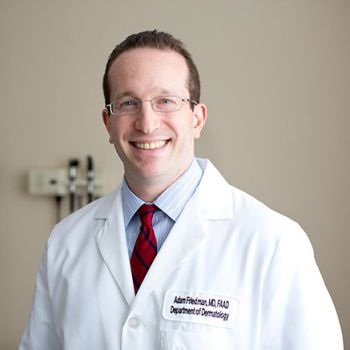
WASHINGTON (July 31, 2017) — George Washington University (GW) researchers have found that topically applied nitric oxide-releasing nanoparticles (NO-np) are a viable treatment for deep fungal infections of the skin caused by dermatophytes, for which the current standard of care is treatment with systemic antifungals.
Dermatophytosis, or ringworm, is a fungal infection of the skin, hair, or nails that affects millions of people around the world. While superficial infections can often be managed with topical agents, fungal infections which infiltrate the hair follicle or into deeper layers of the skin can only be effectively treated with oral or systemic antifungal therapies. Topical antifungals offer limited penetration through the skin.
“Systemic antifungals, while effective, can come with some baggage, given the duration of treatment can be lengthy. They are also known for their ability to adversely interact with many commonly used medications such as blood thinners and anti-hypertensives, or even cause various side effects themselves,” said Adam Friedman, MD, associate professor of dermatology at the GW School of Medicine and Health Sciences and senior author of the study. “The purpose of this study was to explore whether nanotechnology — materials that are billionths of a meter — could be used to overcome need for systemic medications, which would ultimately be safer and easier on the patient.” Friedman and collaborators at the Albert Einstein College of Medicine turned to nitric oxide, a natural, gaseous immunomodulator with broad-spectrum, multi-faceted antimicrobial activity, as the ideal agent for treatment.
“While we have known for decades that nitric oxide has tremendous potential in so many areas of medicine, its use has been limited due to the lack of effective delivery systems,” Friedman said. “Here we used a well-studied nanoparticle that can actually make nitric oxide, not just release it, and deliver therapeutic levels over time to attack these deep and difficult to reach infections.”
In an animal model, the research team found that NO-np facilitated a quicker, more impactful response to treatment over the commercially available topical terbinafine, showing 95 percent of infection clearance by the third day of treatment. These findings are in line with multiple previous reports utilizing the NO-np against fungal and bacterial surgical wound and burn infection.
“The next step is to scale up the technology for clinical trial use in several therapeutic areas given the diverse clinical implications of the nitric oxide producing nanoformulation, as well as the platform overall given its unique ability to encapsulate and deliver a broad range of active ingredients,” Friedman explained. “Dermatophyte infections impact such a large, diverse population, so it’s important to find new treatments that are safe and more effective for all patients.”
“Topical Nitric Oxide Releasing Nanoparticles are Effective in a Murine Model of Dermal Trichophyton rubrum Dermatophytosis” in available in Nanomedicine: Nanotechnology, Biology, and Medicine.


